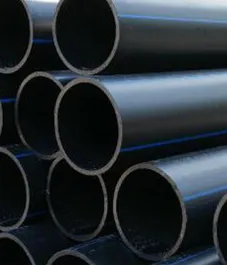dec . 05, 2024 10:21 Späť na zoznam
Installing HDPE Pipes: Best Practices for a Leak-Free and Long-Lasting System
The durability and flexibility of HDPE pipes make them a preferred choice in construction, agriculture, and industrial projects. However, proper installation is critical to ensure a leak-free and long-lasting system. From HDPE double wall corrugated pipes to HDPE reinforced spiral corrugated pipes, each type requires specific handling techniques.

Preparing for Installation: Understanding HDPE Double Wall Corrugated Pipe
Proper preparation is the cornerstone of any successful HDPE vlnitá rúrka s dvojitou stenou installation. These pipes, designed with a smooth inner surface and corrugated outer wall, are ideal for drainage systems and high-flow applications. Before starting, ensure that the trench is excavated to the correct depth and width, allowing for a stable bedding material like sand or gravel. This prevents pipe deformation under heavy loads.
During installation, avoid dragging the pipes along rough surfaces to prevent damage to the corrugated exterior. Proper alignment and joint coupling are essential for maintaining a leak-free system, as any misalignment could compromise water flow and structural integrity.
Ensuring Durability with HDPE Reinforced Spiral Corrugated Pipe
For projects requiring pipes with higher strength and load-bearing capacity, the HDPE reinforced spiral corrugated pipe offers an excellent solution. These pipes feature a spiral design that enhances stiffness, making them suitable for underground installations subjected to high-pressure loads.
To achieve a durable system, use the manufacturer-recommended tools for cutting and joining the pipes. Heat fusion or electrofusion techniques are commonly employed to create secure, seamless joints. Additionally, conduct pressure testing after installation to ensure the joints can withstand operational demands without leakage.
Practical Tips for Handling HDPE Black Pipe
HDPE black pipes are versatile and commonly used for water distribution systems, owing to their UV resistance and flexibility. To ensure a successful installation, start by storing the pipes away from sharp objects and extreme temperatures, which could cause surface damage or warping.
During installation, maintain a consistent slope to prevent air pockets from forming within the pipeline. If using mechanical couplings for jointing, ensure the pipe ends are clean and smooth for a secure connection. These steps minimize the risk of leaks and enhance the overall efficiency of the water supply system.
Maximizing Efficiency with Solid HDPE Pipe
When using solid HDPE pipes for transporting water or chemicals, precision in installation is critical for maximizing efficiency. These pipes are preferred for their smooth interiors that reduce friction, promoting better flow rates.
To ensure reliability, carefully inspect the pipes for any surface irregularities before installation. Properly anchor the pipes to prevent movement during operation, especially in systems experiencing high flow velocities. Using compatible fittings and connectors is crucial to maintain the pipe's integrity and functionality.
Best Practices for HDPE Drainage Pipe Installation
The installation of HDPE drainage pipes requires attention to detail to ensure effective water management. Begin by preparing a stable trench with a uniform slope to facilitate efficient water flow. The smooth interior surface of these pipes ensures debris-free drainage, but improper alignment can lead to blockages.
Seal the pipe joints securely using gaskets or clamps designed for HDPE drainage pipes. Regular inspections during installation help identify potential weak points early, reducing the likelihood of system failure. A well-installed drainage system not only prevents waterlogging but also protects adjacent structures from water damage.
By following these guidelines, you can create a system that is both durable and efficient. From HDPE black pipes used in water distribution to HDPE drainage pipes designed for effective water management, each type brings unique advantages when installed correctly. Investing in proper installation techniques not only extends the lifespan of your HDPE pipes but also ensures a sustainable and cost-effective solution for various applications. Whether it’s for residential plumbing or large-scale agricultural drainage, the reliability of HDPE pipes makes them an essential component of modern infrastructure.
-
Welding Rods: The Backbone of Plastic Welding Applications
SprávyJun.06,2025
-
PVC Sheet: A Versatile Material for Modern Construction and Design
SprávyJun.06,2025
-
PVC Rod: A Reliable and Versatile Material for Industrial Applications
SprávyJun.06,2025
-
Pipe Fittings: Essential Components for Secure and Efficient Plumbing Systems
SprávyJun.06,2025
-
HDPE Sheet: Durable, Versatile, and Eco-Friendly Plastic for All Applications
SprávyJun.06,2025
-
HDPE Pipe Solutions: Durable, Versatile, and Built to Last
SprávyJun.06,2025

